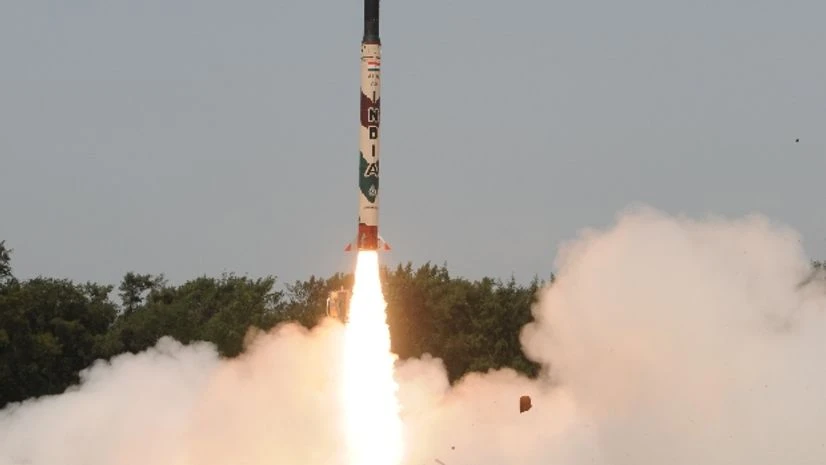India is developing a brand new short-range, ballistic missile called the Agni-1P, equipped with cutting-edge technologies. This will replace the old Prithvi and Agni-1 missiles that are still the workhorses of our land-based nuclear deterrent.
The Agni-1P will have a range of 300-700 kilometres, which matches the ranges of the Prithvi and Agni-1. That would make the Agni-1P predominantly Pakistan-focused, since targets in China are beyond 3,000 kilometres.
Powering the Agni-1P will be the cutting-edge technologies developed for the Agni-4 and Agni-5 missiles, which the Defence R&D Organisation (DRDO) claims matches those in intermediate range ballistic missile (IRBM) anywhere. These advanced technologies will replace the technologies of the 1990s that powered the Prithvi and the early Agni missiles.
Business Standard visited the DRDO’s missile complex in Hyderabad for a briefing on current missile development programmes.
The Agni-1P will be a two-stage, solid propellant missile. Both stages will have composite rocket motors, guidance systems with electro-mechanical actuators, and inertial navigation systems based on advanced ring-laser gyroscopes.
Also Read
“As our ballistic missiles grew in range, our technology grew in sophistication. Now the early, short-range missiles, which incorporate older technologies, will be replaced by missiles with more advanced technologies. Call it backward integration of technology,” explains a senior DRDO missile scientist who wishes to remain anonymous.
India’s ballistic missile programme began in the early 1980s, under the Integrated Guided Missile Development Programme (IGMDP). The DRDO first built the relatively primitive, liquid fuelled, single-stage Prithvi missile that could dump a nuclear bomb with moderate accuracy on a target 150-250 kilometres away. The Prithvi, like the two-stage Agni-1 and Agni-2 missiles that came next, used conventional fuselages made of “maraging steel”, older propellants, hydraulic actuation systems that were vulnerable to leaks and navigation systems that were inaccurate compared to current systems.
By the time the DRDO built the Agni-4 in 2011, it had successfully developed composite rocket motors, high-energy propellants, electro-mechanical actuators and navigation systems with ring-laser gyros that can navigate a ballistic missile to a target thousands of miles away, striking it within a few hundred metres.
Increased accuracy allows India’s to use relatively low-yield nuclear payloads. In 2011, then DRDO chief, Avinash Chander, told Business Standard: “Megaton warheads were used when accuracies were low. Now we talk of [accuracy of] a few hundred metres. That allows a smaller warhead, perhaps 150-250 kilotons, to cause substantial damage.”
The DRDO’s major technology jump took place in the Agni-4 missile, in which cutting-edge technologies that were being developing for years were first tested for use in the coming Agni-5. These included on-board computers based on the Power PC platform, and avionics changes involving integrated technologies. By combining several avionics packages into one, the designers improved reliability and saved space and weight by reducing cabling and harnesses.
These are the technologies that will now power the Agni-1P.
Agni 1P
DRDO scientists say the Agni-5 will undergo a final confirmatory test in January. If that goes to plan, the road-mobile, canisterised missile will joins India’s deployed nuclear deterrent.

)
